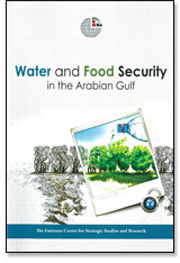Book contents
- Frontmatter
- Contents
- Figures and Tables
- Abbreviations and Acronyms
- Foreword
- Introduction
- Keynote Addresses
- Water Security in a Changing World
- Water Security in the Arabian Gulf Region
- Water Resource Management in the Arabian Gulf Region
- 5 National and Regional Water Security Policies in the Gulf States
- 6 Future Water Supply and Demand in the Gulf States
- Regional and International Food Security
- Water and Food Security in the UAE
- Contributors
- Notes
- Bibliography
- Index
6 - Future Water Supply and Demand in the Gulf States
from Water Resource Management in the Arabian Gulf Region
Published online by Cambridge University Press: 05 September 2014
- Frontmatter
- Contents
- Figures and Tables
- Abbreviations and Acronyms
- Foreword
- Introduction
- Keynote Addresses
- Water Security in a Changing World
- Water Security in the Arabian Gulf Region
- Water Resource Management in the Arabian Gulf Region
- 5 National and Regional Water Security Policies in the Gulf States
- 6 Future Water Supply and Demand in the Gulf States
- Regional and International Food Security
- Water and Food Security in the UAE
- Contributors
- Notes
- Bibliography
- Index
Summary
Water is vital to life, and access to water is considered by the United Nations to be a basic human right. The services derived from it represent the cornerstone around which development is shaped. Water is essential in agricultural and industrial production, and is critical for human health as well as the health of ecosystems. If water is limited, then development becomes restricted and the health of both humans and the environment is strained. Changes in climate, land use, and increasing demand have put major stress on freshwater resources. According to recent studies, worldwide demand for water in 2030 will be 40 percent greater than that of today. This increasing demand will be fueled mostly by population growth. World population has reached the seven billion mark and if the current growth rate is maintained as much as 60 percent of the global population may suffer water scarcity by 2025. This situation will become worse as population increases, with the most water scarce countries dipping to below 100 m3 per person per day (as shown in Table 6.1). This is well below the severe water scarcity level of 500 m3/p/d defined by the UNESCO–IHE Institute for Water Education, at which water availability is considered a primary constraint to life.
According to Bouwer, most of the population growth will be in third world countries, and more specifically in cities resulting from internal migration from rural areas and immigration across boundaries from one country to another.
- Type
- Chapter
- Information
- Water and Food Security in the Arabian Gulf , pp. 135 - 156Publisher: Emirates Center for Strategic Studies and ResearchPrint publication year: 2013



